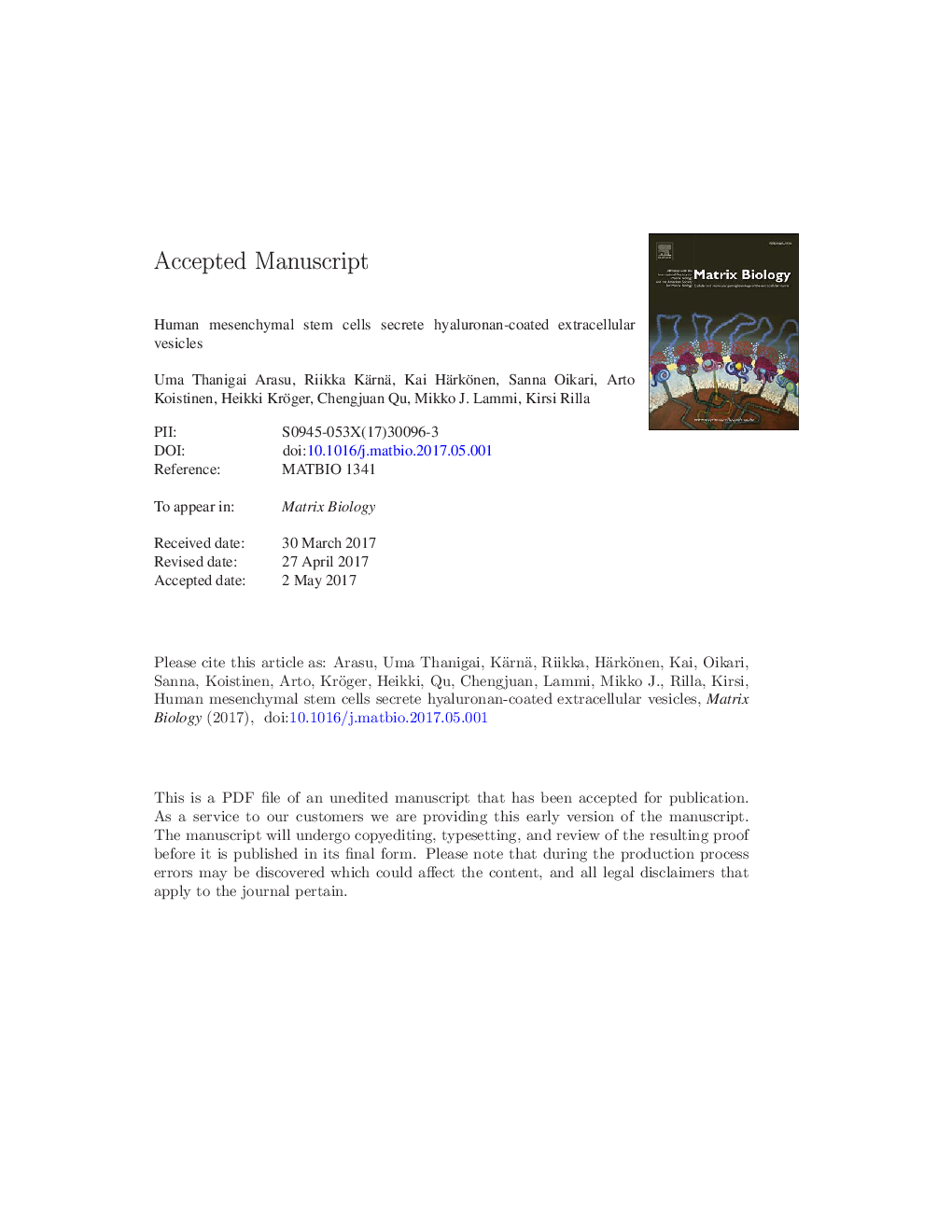| Article ID | Journal | Published Year | Pages | File Type |
|---|---|---|---|---|
| 8455123 | Matrix Biology | 2017 | 44 Pages |
Abstract
Extracellular vesicles (EVs) secreted by stem cells are potential factors mediating tissue regeneration. They travel from bone marrow stem cells into damaged tissues, suggesting that they can repair tissue injuries without directly replacing parenchymal cells. We have discovered that hyaluronan (HA) synthesis is associated with the shedding of HA-coated EVs. The aim of this study was to test whether bone marrow-derived hMSCs secrete HA-coated EVs. The EVs secreted by MSCs were isolated by differential centrifugation and characterized by nanoparticle tracking analysis. Their morphology and budding mechanisms were inspected by confocal microscopy and correlative light and electron microscopy. Hyaluronan synthesis of hMSCs was induced by lipopolysaccharide and inhibited by RNA interference and 4-methylumbelliferone. It was found that the MSCs have extremely long apical and lateral HA-coated filopodia, typical for cells with an active HA secretion. Additionally, they secreted HA-coated EVs carrying mRNAs for CD44 and all HAS isoforms. The results show that stem cells have a strong intrinsic potential for HA synthesis and EV secretion, and the amount of HA carried on EVs reflects the HA content of the original cells. These results show that the secretion of HA-coated EVs by hMSCs is a general process, that may contribute to many of the mechanisms of HA-mediated tissue regeneration. Additionally, an HA coat on EVs may regulate their interactions with target cells and participate in extracellular matrix remodeling.
Keywords
Related Topics
Life Sciences
Biochemistry, Genetics and Molecular Biology
Cancer Research
Authors
Uma Thanigai Arasu, Riikka Kärnä, Kai Härkönen, Sanna Oikari, Arto Koistinen, Heikki Kröger, Chengjuan Qu, Mikko J. Lammi, Kirsi Rilla,
